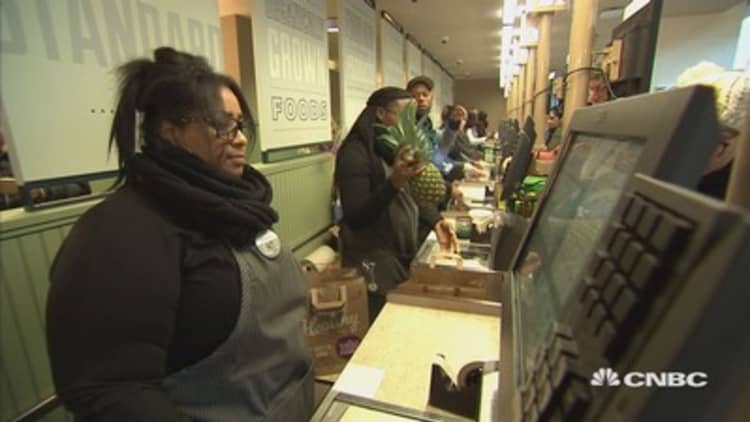Listen to almost any retailer's earnings call and you'll hear it.
Sure, in-store sales comparisons are negative, flat or growing in the meager low-single-digit range; but online revenues—now the holy grail for physical retailers—are showing robust double-digit growth.
It's common for companies to tout these rapidly expanding metrics, pinning investors' hopes on their digital future. But what if they're measuring it all wrong?
According to a new report by Deloitte, using online sales figures to evaluate a company's strength on the Web doesn't tell the whole story. Whereas online revenues accounted for $300 billion last year, digitally influenced in-store sales—which were swayed at some point in the buying process by technology—were more than five times greater, at $1.7 trillion.
Read MoreThese retailers have the biggest online businesses
That means retailers are underestimating the value of their digital business—which might be a problem. By failing to recognize that half of shoppers' in-store sales are affected in some way by the Web, they stand to lose out to smaller, more nimble retailers, who are reaching shoppers earlier in the decision-making process, said Kasey Lobaugh, head of the Deloitte study.
"Digital sales alone—a metric used by most retailers to measure the success of their digital strategy—is a lagging indicator," according to the report.
To compete more effectively, Lobaugh said traditional retailers need to do a better job connecting with shoppers before they make a transaction, and hold their attention until they complete the purchase. That means being active on social media and other platforms while consumers are still deciding what to buy.

Though big-name retailers are taking steps to improve these handicaps—by making it easier to buy merchandise seen on Instagram, for example—companies that are just getting started have a natural advantage, Lobaugh said. Not only are they able to build business models that cater to the way today's consumers shop, but they're also more aggressive in chasing what major retailers consider a small piece of the pie.
"I feel bad for them [big retailers] sometimes," said Claire Chambers, CEO of New York City-based lingerie shop Journelle, while speaking on a panel in Manhattan last month. "There's a lot more to change."
Read MoreRetail rents: Who's paying the most
Whether it's an online-only retailer, who doesn't pay rent, or a grocery delivery service that doesn't even own its products, the rise of digital retail has become the equivalent to "death by 1,000 paper cuts" for the big guys. From 2009 to 2014, the top 25 retailers by revenue lost 2 percent market share, or $64 billion, with little pieces of business going to the smaller players, Lobaugh said.
"The barriers to entry in retail have come down," Lobaugh said.
Read MoreForget discounts—Retailers' new bag of tricks
In a recent note to investors, Wells Fargo analyst Paul Lejuez also argued that sales growth on the Web "does not tell the whole story" for traditional retailers.
"While many retailers boast about their strong sales growth in [e-commerce], few highlight that it is often coming at the expense of store sales," he said. Although that's better than losing out to a competitor, Lejuez said, the shipping and return costs that accompany online sales often eat into the firms' profits.


